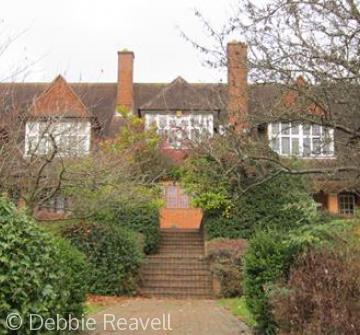Lutyens' Daneshill House, Lychpit, Old Basing

‘Daneshill, 1 m. NW By Lutyens, 1903. Brick, Tudor and conventional.'[1]
These spare words of Pevsner are all there seemed to be said about Daneshill at a time (the 1960s) when Lutyens’ work was considered too populist to be really accepted. Now, with more interest in English vernacular architecture and the ever-present danger of losing large country houses from the late 19th and early 20th centuries, we can place Lutyens within the story of the modern house.
Daneshill House used to be a landmark building highly visible on the ridge above Swing Swang Lane, Lychpit near Old Basing but is now obscured by trees. It is one of a cluster of buildings designed by Lutyens – the Daneshill Brick and Tile Works office building in Bilton Road, the Lodge in Daneshill Drive and Daneshill Cottage, later known as Daneshill Court in Lutyens Close, which after a spell as a retirement home suffered vandalism and then a disastrous fire in 2007 while vacant. The Cottage, Lodge (a private home) and Brickworks buildings are Listed Grade II. The name Daneshill, cooked up by Lutyens and his client, Walter Hoare, was chosen as the area is close to the site of a battle of 871 between the Danes and the Saxons. The name ‘Lychpit’ almost certainly comes from the place where the bodies were buried after the battle. It is an ancient site – 5 Bronze Age burial urns were found here when the commercial site was being developed.[2]
[1] Pevsner, Nikolaus and Lloyd, David The Buildings of England. Hampshire and the Isle of Wight p. 90 Penguin, 1967
[2] Eds. Applin, Bob and Barbara. Stokes, E The Making of Basingstoke. From Prehistory to the Present Day. BAHS, 2008
Content derived from research undertaken as part of the Victoria County History project



